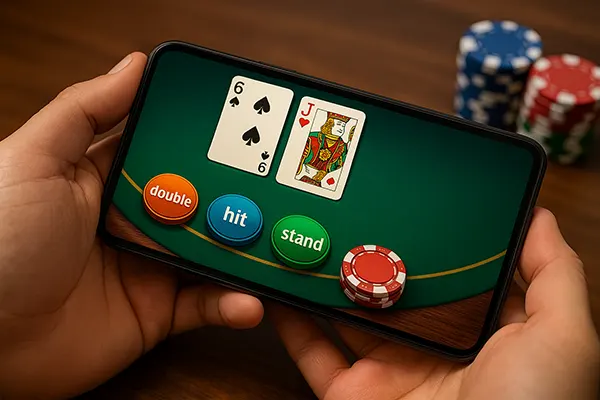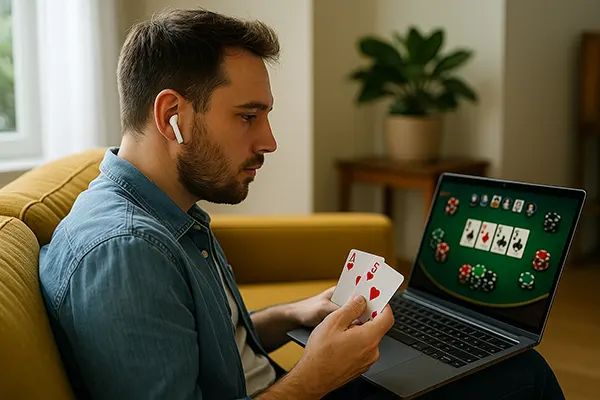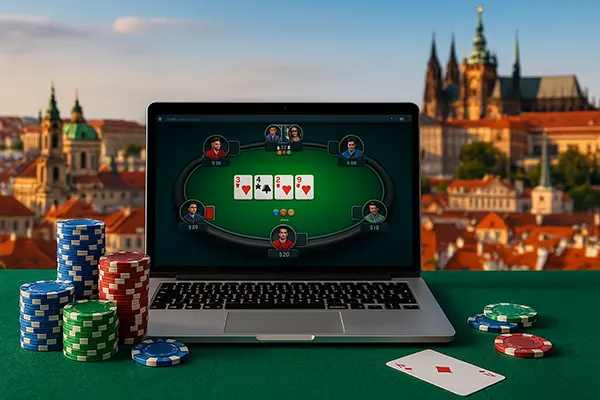
Blackjack on Mobile: Interfaces and Gameplay Features on Your Smartphone
Playing blackjack on your smartphone is no longer a compromise — in many cases, it’s the preferred choice. Mobile blackjack has evolved into a responsive and functional experience that competes with desktop options in terms of usability and strategic convenience. This article explores how user interface design impacts mobile play, whether strategies should be adapted, and how to choose reliable apps for a seamless blackjack experience.
Interface Design in Mobile Blackjack
One of the most important aspects of mobile blackjack is the way interface elements are adapted for smaller screens. A well-designed layout ensures that all controls are easy to reach, visually clear, and logically positioned. Touch-friendly elements replace mouse-click options, enabling faster decision-making under time constraints.
UX (User Experience) is a critical factor in determining whether players can focus on the game without being distracted by cluttered visuals or lag. Smooth animations, responsive buttons, and fast loading times contribute directly to the quality of play. On-screen prompts, such as hit or stand options, must be immediately recognisable and not obstruct gameplay.
Accessibility also plays a role: players should be able to adjust font size, toggle sound, or switch to left-handed mode if needed. These seemingly small design choices impact both enjoyment and decision accuracy during gameplay, especially when playing for real money.
Mobile App vs Desktop Versions
While desktop versions offer more space and often additional features like statistical charts or multi-table play, mobile apps prioritise speed and simplicity. This can influence the way players interact with the game, especially during long sessions or quick rounds on the go.
Most mobile blackjack games are optimised for portrait orientation, allowing one-handed play. This design naturally limits screen space, but it also encourages streamlined menus and fewer distractions. In contrast, desktop versions provide more comprehensive settings and larger card visuals, which are better suited for in-depth analysis or casual browsing.
Mobile players may also benefit from instant login features, biometric authentication, and offline play modes that aren’t always available on desktop. The trade-off is usually in the customisability of the interface and access to complex features like tournament stats or side bets.
Adjusting Strategy for Mobile Play
Whether players should modify their strategy when switching from desktop to mobile largely depends on the interface and pace of the game. Shorter session times and quicker round speeds on mobile might prompt users to make faster, less calculated decisions — often reducing the effectiveness of basic strategy charts.
Mobile games tend to present fewer distractions in terms of side menus or background features, but the fast gameplay rhythm could affect decision-making. Players should therefore focus on practicing core strategies that can be applied quickly without requiring long pauses or multiple open tabs.
Card counting or multi-hand strategies are generally less viable on smartphones due to limited screen space and faster dealing animations. This makes mobile better suited for single-hand sessions and simplified strategic approaches.
Common Mobile Play Challenges
Battery consumption is a notable concern — extended sessions may deplete a smartphone’s charge faster than expected, especially when graphic animations are involved. Players should ensure they have sufficient battery life or access to power before engaging in prolonged sessions.
Screen size limitations mean there is less room for mistakes. Misclicks are more likely on compact layouts, particularly when buttons are small or poorly positioned. This is why intuitive UI design is crucial for preventing accidental plays that can impact the outcome of a hand.
Internet connectivity can also affect gameplay. Unlike desktops, which usually rely on stable home networks, mobile players might use fluctuating mobile data connections. A sudden drop can lead to disconnection during critical gameplay moments, affecting fairness and continuity.

Choosing a Reliable Blackjack App
When selecting a mobile blackjack app, players should prioritise security, licensing, and fair play certification. Apps should be licensed by reputable gaming authorities (e.g., UKGC, MGA), and use RNG (Random Number Generator) testing to ensure fairness in card dealing.
Player reviews and ratings can provide useful insight into the app’s stability, speed, and usability. It’s also important to verify if the app supports real-money gameplay in your region and whether it integrates secure payment gateways for deposits and withdrawals.
Another key factor is the availability of customer support. A good app offers live chat or email support and clearly communicates rules, terms, and privacy policies. Look for applications that are regularly updated, as this signals active maintenance and attention to user feedback.
Features Worth Considering
Customisable table limits are valuable for players who want to manage their bankroll efficiently. Some apps also offer practice modes with virtual currency, which are ideal for newcomers or those refining their skills without financial risk.
Multi-device compatibility is another plus: being able to start a session on a phone and continue on a tablet or smart TV provides flexibility. Cloud-based account syncing helps preserve progress and settings across devices.
Finally, push notifications can inform players about in-game events or bonus rounds. However, these should be adjustable or optional, as frequent interruptions can interfere with focused gameplay sessions.
The most popular articles
-
 Video Poker Mini-Tournaments: Approaches, ...
Video Poker Mini-Tournaments: Approaches, ...Video poker in the mini-tournament format has become one of the most …
-
 Poker in Eastern Europe: The Fastest-Growi...
Poker in Eastern Europe: The Fastest-Growi...Online poker has become a defining element of the digital gaming economy …
-
 How LLMs and AI Are Changing Poker: Multi-...
How LLMs and AI Are Changing Poker: Multi-...Poker, a game that has always balanced logic, psychology, and probability, is …
